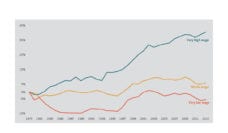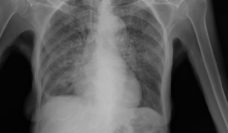California aims to eliminate tuberculosis by 2040, and has a five-year plan that lays out specific steps to achieve this goal. But the current burden of infection in the state may not allow for that goal to be met.
Tuberculosis has been, and still is, a nationally notifiable disease, meaning clinicians must report new cases to their local health departments, which then report to the Centers for Disease Control and Prevention. There were 9,105 reports of new tuberculosis cases in 2017, the lowest number in the US ever. But costly treatment and drug-resistant strains of Mycobacterium tuberculosis, the bacteria that cause the infection, continue to make it difficultAlt to achieve elimination in this century.
About 20% of the cases reported nationally in 2017 occurred in California. Eighty percent of tuberculosis infections in California were latent, and did not present any signs of illness.
Researchers at University of California, Davis were interested in understanding the specific impact of national economic crisis on the disease. In particular, they aimed to assess how tuberculosis cases in California were affected by the recession between 2007 and 2009.
The researchers used annual tuberculosis surveillance reports from the California Department of Public Health between 2000 and 2016. They measured the number of new tuberculosis cases in the state each year, the rate of those cases per 100,000 people per year, and the number of annual deaths from the infection. The researchers also collected information on tuberculosis-related hospitalization and emergency room visits. They then observed how these measures compared before the beginning of the recession in 2007 and after the end in 2009.
The results of this study indicate that tuberculosis cases declined at a slower rate annually in post-recession periods than in pre-recession years in California. Tuberculosis case rates decreased overall from 2000 to 2009, but then plateaued at fairly steady rates until 2016. Hospitalization from tuberculosis dropped drastically from 2000 to 2010, but then began to decrease at a much slower pace. Yet, people visited emergency rooms for tuberculosis twice as much between 2010 and 2016, as compared to the period before the recession. This may have been a result of changes in insurance in the wake of the recession.
Although tuberculosis rates fluctuated from high to low in the years of the recession, the researchers conclude that the economic crisis slowed the decline of tuberculosis in California.
Their study is the first in the US to examine the influence of national economic difficulties on tuberculosis. European research has explored and found evidence of associations between recession and tuberculosis control. The infection can be prevented and cured when managed and treated effectively, but economic downturn may negatively impact control efforts. Tuberculosis is already difficult to manage in the US, as it is often overlooked by clinicians in some areas that do not consider it a local threat. If the decline in tuberculosis cases continues to slow, it will challenge California’s goal to eliminate the infection by 2040.
Feature image: NIH, 3D print of Mycobacterium tuberculosis, the bacterium that causes tuberculosis. NIH 3D Print Exchange at 3dprint.nih.gov, used under CC BY 2.0














